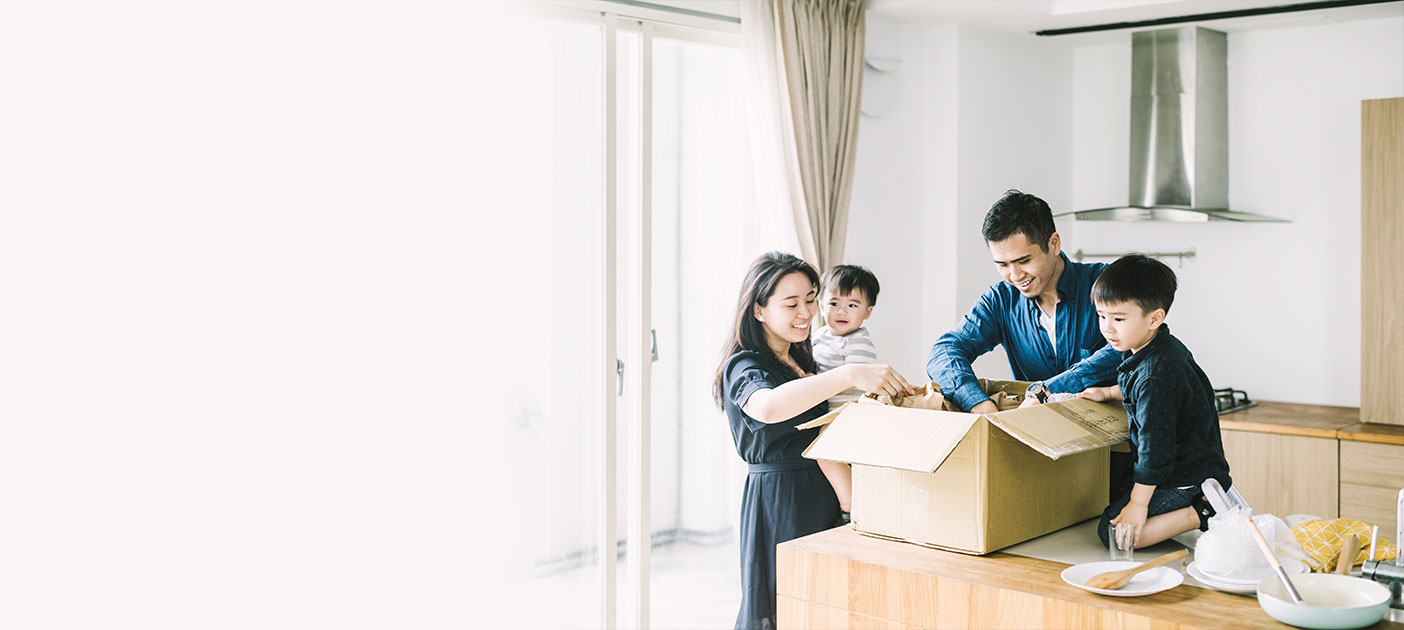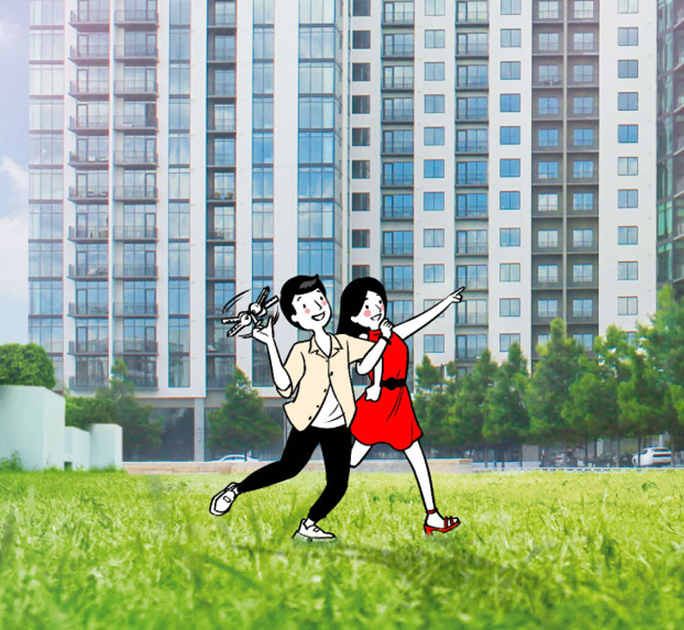![]()
If you’ve only got a minute:
- Consider the size of your family, lifestyle and future plans before making a decision to upgrade or right-size your home.
- Upgrading to a larger home may require a bigger mortgage and higher maintenance costs, while right-sizing to a smaller home may result in lower expenses but lower resale value.
- It is important to consider the financial implications and choose what works best for your budget and long-term goals.
- Seek professional advice to gain valuable insights into the local housing market for picking the right property for your needs and budget.
![]()
If you are planning to upgrade or rightsize your home, you will soon realise that the process of home switching may require quite a bit of planning and coordination. If you thrive on managing projects, well – congratulations! That’s because you’ll have to juggle logistical constraints, financial constraints, and housing regulations in Singapore.
Upgrading to a new home is exciting but sometimes stressful. Watch this 5-minute video for tips on managing issues like affordability, ABSD, and potential delays in your buying timeline. Only from our Property Experts!
Start Planning for your home switch
Here are Singaporeans’ 7 most frequently asked questions about home switching, answered. We promise it’s helpful even if you’re not so keen on project management.

Q1: If I own an HDB flat, what am I eligible to buy?
Before you can sell your HDB flat or executive condominium (EC), you must first complete the Minimum Occupation Period (MOP): This is usually 5 years from the date of key collection. You can log-in to the HDB website to check your MOP status. Do note that those who are under the Prime Location Public housing scheme will face a longer MOP of 10 years.
After the MOP, you can switch to an HDB resale flat or private property without having to meet income requirements.
It is also possible to switch to an HDB BTO flat or executive condominium, provided you meet the income ceilings ($14,000 for BTO and $16,000 for executive condominium).
Note that if you switch to another HDB flat, you will be regarded as a second-timer applicant and thus be ineligible for certain housing grants and privileges.
Q2: Do I need to pay a resale levy?
If you are switching from an HDB flat (any type) to an HDB BTO flat or EC, you will need to pay a resale levy on top of HDB’s flat price.
The resale levy applies regardless of whether you are upgrading or rightsizing your flat — it is calculated based on the size of your current HDB flat only. The amount ranges from $15,000 for a 2-room flat to $55,000 for an Executive Condominium.
If you sell off your current flat before buying the new one, HDB will deduct the resale levy directly from the sale proceeds. Otherwise, you must pay the resale levy to HDB in cash when you take possession of the new flat.
Note that the resale levy does not apply if you’re switching from an HDB flat to any of these:
• Design, Build and Sell Scheme (DBSS) flat from a developer
• EC from a developer, where the land sale was launched before 9 December 2013
• HDB resale flat
• Private residential property

Q3: If I own private property, can I buy an HDB flat?
If you own private property, it is possible to switch to the following HDB flat types:
• HDB resale flat (no income ceiling)
• HDB BTO 2-room Flexi with short lease ($14,000 income ceiling)
You must sell off your private property within 6 months of buying the HDB flat.
For the other HDB flat types (BTO and EC), it is much less straightforward. You will need to sell off your private property and wait 30 months before you are eligible to apply.
Q4: Should I buy first then sell, or sell first then buy?
Financially, it makes more sense to sell your current home first, then buy your next home. The proceeds from the sale can go straight into financing your new place and you do not need to worry about having to manage multiple mortgages.
However, the risk is that you might not secure your new property in time for your move-out date, so you may need to find alternative accommodation. You may even need to rent a temporary home for the time being, which will add on to the cost of your move.
What about buying your second home first?
Accommodation-wise, you would be secure. But it can complicate your mortgage (see the next section for details).
More importantly, you might feel pressured to sell your first home within a certain timeframe — and a rushed sale is not often in the seller’s favour. You might face hiccups such as an unfavourable sale price, losing your ABSD remission, or even the prospective buyer backing out at the last minute.
As you can see, there are pros and cons to each. If you are still undecided, try using the DBS MyHome planning tool to visualise the sales and purchase timelines side by side and see which is more practical for you.

Q5: If I’m buying first, how can I afford the down payment?
As long as you still have an outstanding mortgage (regardless of your intention to sell!) your new home loan application will be treated as a second mortgage.
That means you can only borrow up to 45% of the home value. You’ll also have to pay at least 25% of the home value in cash. For a $1 million condominium unit, that means a down payment of at least $250,000 in cash and $300,000 in CPF.
It could be even more, depending on whether your second mortgage is within the stipulated Mortgage Servicing Ratio (MSR) and Total Debt Servicing Ratio (TDSR) rules. The type of property you purchase has some bearing on your limits. You can get a quick snapshot of the sums involved with the DBS MyHome planning tool.
If most of your cash and CPF savings are locked up in the first home, you’ll now have to find some way to pay the down payment and secure your home loan.
For those switching from one HDB flat to another HDB flat, you can use the Contra Payment Facility (for buying a BTO flat) or Enhanced Contra Facility (for buying a resale flat). This is essentially a loan on top of your current housing loan, meant to ease your cashflow.
Alternatively, a temporary bridging loan can help. This is a short-term bank loan (up to 6 months) for the down payment while you wait to sell your first home. You’ll need to repay it in full once the sales proceeds come in.
Q6: Do I need to pay Additional Buyer’s Stamp Duty?
Additional Buyer’s Stamp Duty (ABSD) is a tax on owning multiple properties in Singapore. For citizens, ABSD on the second property is 20%.
If your second property is an HDB flat, you do not need to pay ABSD when you buy the flat. That’s because you are not allowed to own two HDB flats anyway — you are expected to sell off your first home within 6 months.
If your second home is private property, then you need to pay 20% ABSD when you buy it. You can request an ABSD remission if you sell off your first property within 6 months.
On 26 Apr 2023, a new set of measures to promote a sustainable property market was announced.
Read more: Measures for a Sustainable Property Market

Q7: If I’m selling first, do I need to top up anything?
When you sell your home, the sale proceeds will first go into settling your outstanding home loan and back to your CPF account. The remainder will then be in the form of cash for you to pocket.
The CPF part includes:
• Any housing grant you qualified for
• CPF savings used to pay the down payment
• CPF savings used for your home loan instalments
• Accrued interest (2.5% per year, compounded) on all of the above
Both cash and CPF can be used to pay for your next home, but it is not necessarily enough for the upgrade of your dreams.
Take the example of a young couple who made $200,000 in cash and CPF from selling their BTO flat. To upgrade to a S$1 million condo unit, they need to top up $50,000 from their own savings to afford the 25% down payment.
However, if they choose to buy a more modest $700,000 HDB resale flat, the sale proceeds would be more than sufficient for the down payment.
Apart from the initial top up, you should also consider the possibility of higher mortgage repayments if you plan to upgrade your home.
Plan ahead for the switch
With so many moving parts, it definitely pays to plan your home switch for a smooth transition. Work out the sums easily using the DBS MyHome planning tool.
Not only that, we’ll automatically generate a cashflow timeline to help you stay on track for all the important milestones: how much cash you need to pay, how much you’ll receive, and when.
Now you’re on your way to navigating your first home switch with greater confidence.






